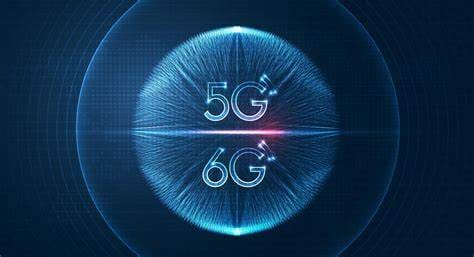5G and 6G Networking: Powering the Future of Connectivity
The era of 5G is upon us, and it’s transforming the way we live, work, and interact with technology. As 5G and 6G networks continue to be deployed globally, the promise of faster data speeds, lower latency, and the capacity to support a vast number of connected devices is becoming a reality. At the same time, researchers are already looking ahead to 6G—a technology that promises even more groundbreaking capabilities. Together, these advancements are enabling new applications in IoT, AR/VR, telemedicine, and smart cities, among others.
What is 5G?
5G, or fifth-generation wireless technology, is a major leap forward from previous generations like 4G LTE. The technology provides ultra-fast internet speeds (up to 10 Gbps), which is significantly faster than what we’re used to. More importantly, 5G boasts ultra-low latency, which is critical for real-time applications like online gaming, virtual reality (VR), and autonomous driving.
Additionally, 5G’s capacity to support billions of IoT devices will enable smart cities, where everything from traffic lights to garbage bins can be connected and optimized. This will lead to more efficient energy use, reduced traffic congestion, and improved public services.
The Road to 6G
While 5G is still being rolled out in many parts of the world, researchers are already working on the next generation of wireless technology—6G. Expected to be available around 2030, 6G will bring even higher data rates, lower latency, and more advanced features like AI-powered network management and terahertz frequency bands for faster communication. 6G is expected to enable applications that are currently unimaginable, such as holographic communication, real-time cloud gaming, and autonomous infrastructure.
How 5G and 6G Are Transforming Industries
The advent of 5G and the development of 6G are setting the stage for transformative changes across a wide range of industries.
- Telemedicine: The healthcare sector is one of the biggest beneficiaries of 5G. The technology enables remote surgeries, real-time patient monitoring, and telemedicine consultations with seamless video quality and zero delays. With 6G, these applications will be further enhanced, making healthcare more accessible and efficient.
- Smart Cities: The Internet of Things (IoT) will play a key role in the development of smart cities, where everything is connected. 5G allows for the integration of traffic systems, energy grids, and public services, leading to greater efficiency and reduced carbon footprints. 6G will take this to the next level by enabling real-time data processing on a massive scale.
- Real-time Cloud Gaming and AR/VR: 5G’s low-latency network enables real-time cloud gaming and immersive augmented reality (AR) and virtual reality (VR) experiences. As 6G evolves, it will support holographic communication, allowing users to interact with 3D holograms of other people, making it a game-changer for entertainment and communication. Know more here.
Conclusion
Both 5G and 6G networking technologies are set to transform industries and revolutionize the way we live. As they unlock new opportunities for businesses and individuals alike, staying informed about their potential applications is crucial. For the latest updates on 5G, 6G, and related tech advancements, visit computese.com.








